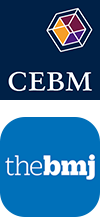



 How do we consider diseases nowadays and how do we develop and interpret evidence on this? The questions was introduced in an earlier blog because Evidence-based medicine (EBM) does not seem to tell (1–4). I argued that we need to be explicit in our consideration of both the properties of evidence and disease because they influence each other. Focus only on evidence may create a discrepancy between potentially correct evidence and our fundamental understanding of disease.
How do we consider diseases nowadays and how do we develop and interpret evidence on this? The questions was introduced in an earlier blog because Evidence-based medicine (EBM) does not seem to tell (1–4). I argued that we need to be explicit in our consideration of both the properties of evidence and disease because they influence each other. Focus only on evidence may create a discrepancy between potentially correct evidence and our fundamental understanding of disease.
As suggested, overdiagnosis could be a manifestation of such a discrepancy: the diagnosis is correct and potentially based on a massive amount of evidence throughout the years but it identifies conditions that were never going to cause harm and the diagnosis itself turns harmful (5). Such diagnosis is far from our fundamental understanding of it. And current EBM does not seem to address this.
Hypertension is one example: an overdiagnostic condition with clear evidence of being a health risk (6). It is also an example of the important point that EBM is already reducing overdiagnosis even without explicit considerations about the properties of a disease as a phenomenon. My colleagues and I used EBM to point out the lack of evidence of positive effects for lowering the treatment thresholds (7) and Bell and colleagues have pointed out the evidence of no effect for lowering the diagnostic threshold for 80 % of the suggested group (8).
But the 80 % is a problem: some people benefit of being diagnosed. It is a question of risk just like the diagnosis of hypertension itself is fundamentally a risk. We are returning to the main point: how do we consider the investigated phenomenon? Which principles qualify a risk factor to be categorized as a diagnosis? Is it then a disease?
A risk is a continuum: the extremes are quite distinct but all in between is difficult to determine. The problem has been known for 2400 year and is called Sorites Paradox: how many times can we remove grains from a heap (soros) before we no longer have a heap? (9). Vague terms hinder a clear boundary of application.
The implication is the point: more or better evidence does not give an answer to this problem. We can reject diagnosing a risk if we have no evidence of effect or if we have evidence of no effect. But anything in between can potentially be diagnosed. Although being crucial contribution to EBM and medical practice, neither the Guidance for Modifying the Definition of Diseases, the Users’ Guides to the Medical Literature, GRADE, nor the manifesto seem to address this (1–4).
However, there are ways to handle the paradox. In everyday life we can to some extent neglect the inexactness by contextualize the term in the given situation. Such an approach is less useful in science. One solution is to accept that we can potentially diagnose all health risks. Another is to reject diagnosing a health risk. I would suggest that we discuss what we consider diseases to be, not for the purpose of a solution but for the sake of the discussion itself. I will clarify this in the last blog.
Christoffer Bjerre Haase is Doug Altman Scholar and a researcher and medical doctor from University of Copenhagen. Based on the theory of science, philosophy and evidence-based medicine, Christoffer is primarily interested in the inter-relations between the concepts of overdiagnosis and diagnosis/disease and the ways (medical) science and societal discourses influence those concepts.
Christoffer Bjerre Haase has no conflict of interest